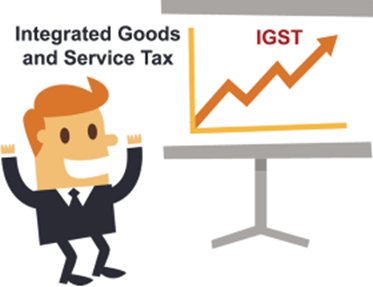IGST Full Form | What is Integrated Goods and Services Tax
What is the full form of IGST
IGST: Integrated Goods and Services Tax
IGST stands for Integrated Goods and Services Tax. It is a category of GST that refers to taxes levied on interstate transactions or supplies of goods and services which are taxable as well as on imports of goods and services.

IGST is collected by the Central Government and is further distributed among the respective states. IGST is charged when a product or service moves from one state to another state. The tax is shared between the central and state governments. The state deals with the Central Government and not with other states to settle the interstate tax amounts.
Features of IGST Tax:
- It is applicable to inter-state supply of goods and services.
- It ensures that the consuming state gets the SGST component of the IGST Tax.
- It maintains the integrity of Input Tax Credit chain in inter-state supplies.
- It abolished the earlier Central Sales Tax (CST) Act, 1956.
The GST act governs IGST levies. According to the IGST Act, the Centre would levy IGST which would be CGST plus SGST on all inter-state transactions of taxable goods and services. The tax will be collected by the Central Government, and the tax will be apportioned between the union and the states in the manner as may be provided by Parliament by law on the recommendations of the Goods and Services Tax Council.
Let us understand IGST with an example:
Let us understand IGST with an example:Ram is a trader in Delhi. He sold goods worth Rs. 5000 to Mohan in Rajasthan. It is an interstate transaction, so IGST is applicable here. Suppose the GST rate for the goods is 15%. So, the IGST charged by the Central Government will be Rs. 750 (15% of Rs. 5000) and the new price of the product would be Rs. 5750. The IGST is paid to the central government and is shared between the state government and central government as the tax rates decided by the authorities.
Integrated GST is also applicable to import of goods and services into India. The basic concept is that any transport of goods or services during the import of goods or services into the territory of India shall be deemed to be a supply involving inter-state trade or commerce and hence liable to IGST.